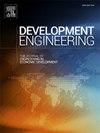Toilet alarms: A novel application of latrine sensors and machine learning for optimizing sanitation services in informal settlements
Abstract
The cost-effectiveness and reliability of waste collection services in informal settlements can be difficult to optimize given the geospatial and temporal variability of latrine use. Daily servicing to avoid overflow events is inefficient, but dynamic scheduling of latrine servicing could reduce costs by providing just-in-time servicing for latrines. This study used cellular-connected motion sensors and machine learning to dynamically predict when daily latrine servicing could be skipped with a low risk of overflow. Sensors monitored daily latrine activity, and enumerators collected solid and liquid waste weight data. Given the complex relationship between latrine use and the need for servicing, an ensemble machine learning algorithm (Super Learner) was used to estimate waste weights and predict overflow events to facilitate dynamic scheduling. Accuracy of waste weight predictions based on sensor and historical weight data was adequate for estimating latrine fill levels (mean error of 20% and 22% for solid and liquid wastes), but there was greater accuracy in predicting overflow events (area under the receiver operating characteristic curve of 0.90). Although our simulations indicate that dynamic scheduling could substantially reduce costs for lower use latrines, we found that cost reduction was more modest for higher use latrines and that there was a significant gap between the simulated and implemented results.

 求助内容:
求助内容: 应助结果提醒方式:
应助结果提醒方式:


